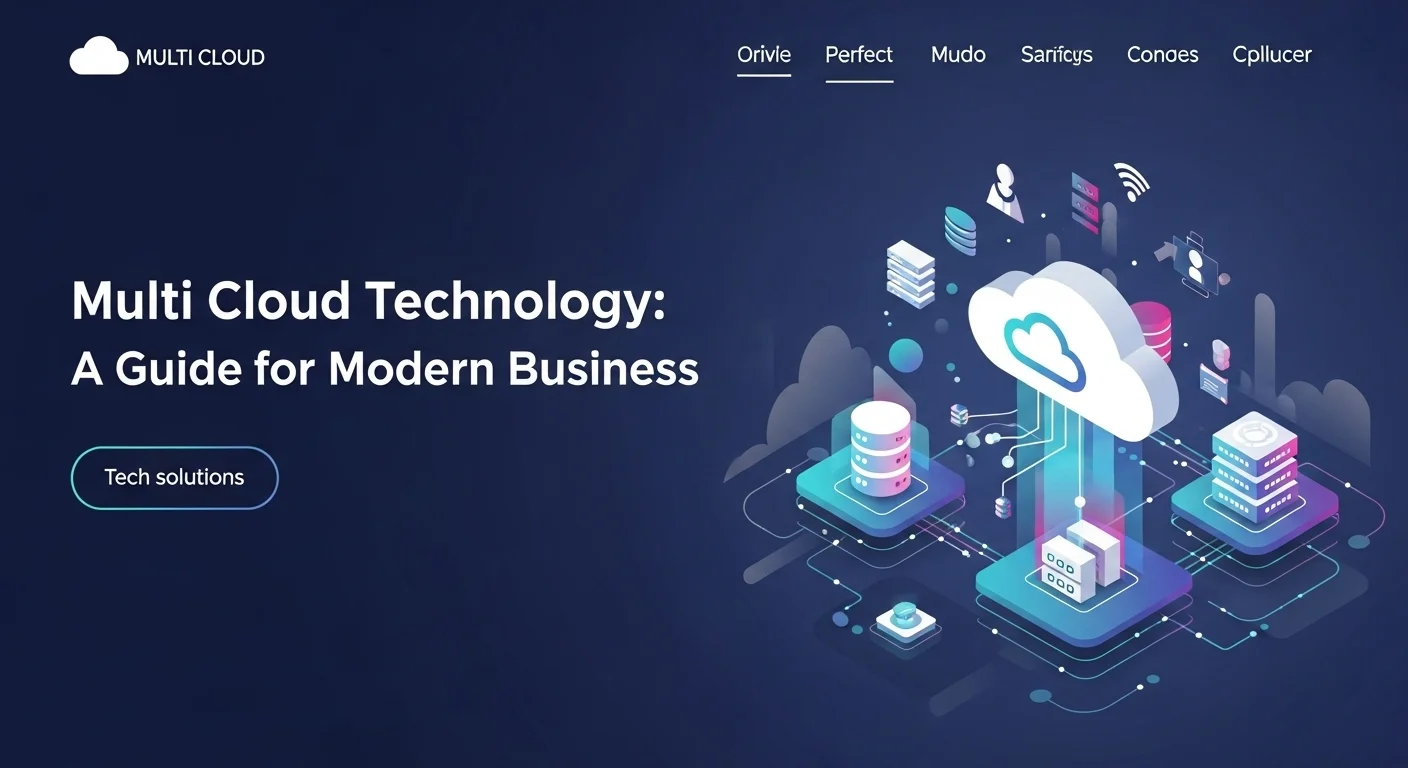How to Name Your Tech Business: A Founder’s Playbook for Creating a Memorable Brand

Executive Summary
I've seen it a hundred times in my career: a brilliant tech idea held back by a clumsy, forgettable name. In today's crowded market, your name is your first handshake, your digital billboard, and the cornerstone of your brand. It's more than a label; it's your story in a single word. This guide is my personal playbook, forged from years of helping startups go from a great idea to an unforgettable brand. We'll cut through the noise and cover everything from the psychology of a great name to the practical tools and legal checks you can't afford to skip. Whether you're building the next big SaaS or a niche gadget shop, let's find a name that works as hard as you do.
Table of Contents
Table of Contents
Why Your Tech Name is More Than Just a Label
In the world of technology, your name is your first line of code. It sets the tone for everything that follows. I once worked with a startup in the data security space. They had a groundbreaking product but called themselves 'Secure Data Solutions.' Technically accurate, but completely invisible in a sea of similar names. It was generic and inspired zero confidence. After a few workshops, we landed on 'Aegis Vault.' Suddenly, they weren't just a solution; they were a fortress. That’s the power of a name. It transforms perception.
For any startup or small business, a powerful name is your sharpest tool for cutting through the noise. In crowded fields like AI, FinTech, or Cloud Computing, a distinct, memorable name is what makes a potential customer pause and take notice. When you're brainstorming ideas for your venture, don't just think about what you do; think about the story you want to tell. Your name is the title of that story, and it's your first and best chance to make a lasting impression on investors, partners, and your future customers.
The Psychology Behind a Name That Sticks
Ever wonder why some names just feel right? Think about the names you use and trust. 'Zoom' sounds fast. 'Stripe' feels simple and clean. 'Nest' evokes a sense of home and comfort. These names aren't accidents; they tap into our subconscious, triggering emotional and cognitive responses. A great name sets the user's expectation before they even click 'learn more.' This is especially true when you're looking for aesthetic or modern-sounding names—you're often chasing a feeling of innovation and ease-of-use.
A clunky, hard-to-spell, or confusing name creates friction. It's a small hurdle, but it's one you force on a user before they've even experienced your product. On the other hand, a smooth, appealing name creates a positive first touchpoint. When I advise founders, I ask them: What do you stand for? What problem are you truly solving? A name like 'Tesla' isn't just a name; it evokes pioneering invention and an electrical revolution, perfectly aligning with the company's mission. Your name should be a vessel for your brand's core values.
The Modern-Day Naming Hurdles: Domains, SEO, and Handles
Back in the day, you just needed a cool name. Now, the game is more complex. The single biggest hurdle I see founders face is the digital footprint. Your brilliant name idea is useless if the .com domain is taken, the Twitter handle is gone, and the Instagram account is squatted. The search for a name is now inseparable from the search for a digital address. This has led to creative solutions, like using newer domain extensions (.ai, .io, .tech) that can actually reinforce your brand's focus.
Then there's the 'Googleability' factor. A name that's too generic, like 'The App Company,' will be impossible to rank for in search results. A name that's a common word can also get lost. I always advise clients to search for their top name ideas. What comes up? Are there negative associations? Are there other companies with similar names that will cause confusion? A unique, distinct name is an SEO gift because you can 'own' that search term. Before you fall in love with a name, you have to audit its digital viability. In today's world, if you don't exist online, you barely exist at all.

The Complete Naming Playbook: From Blank Page to Brand
Finding the right name can feel overwhelming, but it becomes manageable when you treat it like any other business project: with a clear process. This is my playbook for turning a daunting task into a strategic journey. It’s a blend of creative exploration and practical, boots-on-the-ground validation that will lead you to a name that’s not just cool, but powerful.
Phase 1: Laying the Groundwork
Before you even think of a name, you need to understand the soul of your business. This foundational work makes the creative part much easier.
1. Define Your Core Identity:
- Mission & Vision: In simple terms, why do you exist? What future are you building?
- Value Proposition: What problem do you solve better than anyone else? This is your unique magic.
- Target Audience: Who are you talking to? A developer? A CEO? A busy parent? Speak their language.
- Brand Personality: If your brand walked into a room, how would you describe it? Is it a trusted advisor, a playful innovator, or a sophisticated powerhouse? List 5-10 adjectives.
2. Spy on the Competition:
Look at the names of your competitors. Do they all sound the same? Are they literal and descriptive, or abstract and evocative? I find this is the best way to spot a gap. Your goal is to find a unique space to own, a name that zigs where everyone else zags. This is critical for any small business that needs to stand out.
3. Unleash the Brainstorm:
Now, the fun begins. Aim for quantity over quality at this stage. No idea is a bad idea. Get everything down on a whiteboard or a doc.
- Word Association: Start with your core concepts ('security,' 'data,' 'speed') and map out everything they make you think of.
- Metaphors: What does your service feel like? A 'shield' for security? A 'jet' for speed? Metaphors are a goldmine for evocative names.
- Mix and Match: Combine two relevant words. It’s a classic for a reason (Microsoft = Microcomputer + Software).
- Play with Language: Try adding modern prefixes (Omni-, Syn-, Hyper-) or suffixes (-ify, -ly, -zen). Look up words in Latin or Greek that relate to your concept for a touch of elegance. 'Lumina' (from light) sounds much more aesthetic than 'BrightCo'.
Phase 2: Using Tech to Find Your Name
Your brain is your best tool, but technology can be a fantastic creative partner. My trick for using AI name generators is to feed them not just keywords, but the brand personality adjectives from Phase 1. The results are often surprisingly insightful.
Key Tools:
- AI Name Generators: Use them for inspiration. Give them detailed prompts to get the best results. Many will even check for domain availability as they go.
- Domain & Handle Checkers: This is a non-negotiable step. I use tools like Namechk to instantly see if a name is available across dozens of domains and social platforms. A name isn't real until you can own its digital real estate.
- Visual Thesauruses: These tools create mind maps of related words, helping you discover unique synonyms and creative paths you might have missed.
Phase 3: From Long List to The One
Now it's time to be ruthless. Take your massive list and start cutting it down to 3-5 top contenders. This is where you switch from creative mode to critical mode.
1. The SMELL Test:
I didn't invent this, but I use it with every client. A great name should pass this test:
- S - Simple: Is it easy to say, spell, and remember? Don't make people work for it.
- M - Meaningful: Does it connect to your brand's mission?
- E - Expansive: Will it grow with you? 'San Francisco Web Design' is limiting if you expand to mobile apps.
- L - Legs: Can you build a story and visual brand around it?
- L - Legal: Is it available to use?
2. The Legal Deep Dive:
This is the most important step. Don't skip it. I’ve seen companies have to rebrand a year in because of a trademark dispute. It's a nightmare you want to avoid at all costs. Do a preliminary search on the USPTO (US) and WIPO (global) databases. Then, before you commit, consult a trademark lawyer. It's one of the best investments you'll make.
3. The Feedback Loop:
You're too close to it now. Get fresh eyes on your shortlist. Ask a trusted group of advisors or potential customers. Don't just ask, 'Which do you like?' Ask which name best fits a brand that is '[insert your personality adjectives].' Their answers will be incredibly revealing.

Pro Tips to Make Your Tech Name Unforgettable
Getting through the process is one thing, but landing on a truly exceptional name requires a bit of finesse. These are some of the strategies and tools I use with my clients to go from a good name to a great one. Think of these as the finishing touches that can make all the difference for your new tech business or shop.
Advanced Naming Strategies
1. Don't Paint Yourself into a Corner:
This is the future-proofing principle. Amazon started by selling books, but its name was big enough to become 'the everything store.' When you're brainstorming, think five years ahead. Don't tie your name to a single product or a technology that might become obsolete. 'Pete's Drone Repair' is a great name, until Pete wants to sell drone software.
2. Give it Action, Give it Energy:
Names that are verbs or imply action have a natural energy. 'Shopify' isn't a place; it's something you do. 'Zoom' feels like a promise of speed. Brainstorm verbs related to the outcome you provide your customers. It’s an effective way to create a name that’s both memorable and communicates immediate value.
3. Be Human in a World of Tech:
In an era of cold algorithms, a human touch goes a long way. Names like 'Oscar' (health insurance) or 'Lemonade' (home insurance) are disarmingly simple and trustworthy. They build an instant connection. This is a powerful strategy, especially if you're aiming for an aesthetic, modern brand that feels approachable and friendly.
4. Check the Rhythm and Flow:
Say your potential names out loud. Seriously, walk around the room and say them. How do they sound? Is there a pleasing rhythm? Names like 'Cloudflare' or 'PayPal' just roll off the tongue. Avoid names that are a mouthful or have awkward sounds. If your sales team stumbles saying it, your customers will too. This is crucial for word-of-mouth marketing.
My Go-To Naming Toolkit
To put these strategies into action, you need the right tools:
- Project Management (Trello, Asana): The naming process is messy. Use a simple board to track your ideas from 'Brainstorm' to 'Shortlist' to 'Legally Cleared.' It brings order to the chaos.
- Collaboration (Miro, Slack): Naming shouldn't be a solo mission. Use a virtual whiteboard for team brainstorming and a dedicated Slack channel to share ideas and feedback as they come up.
- Trademark Databases (USPTO, WIPO): Get comfortable with these sites. You can eliminate dozens of names with obvious legal conflicts yourself before you ever have to pay a lawyer.
- Brand Monitoring (Brand24, Mention): Before you commit, run your final name through one of these tools. See what people are already saying about that word. You might uncover a weird pop culture reference or negative association you'd never find otherwise.
A Resource I Swear By
If you really want to understand the mindset of the people who fund and build the most successful tech companies, you need to read the content from Andreessen Horowitz (a16z). Their blog is required reading for my clients. It's not a naming guide, but it will give you the strategic context your name needs to thrive in. You can find their brilliant articles here: https://a16z.com/articles/.
Your Launch Sequence
Once you've made the final decision, don't hesitate. The work isn't over. It's time to claim your territory.
- Secure Your Assets Immediately: The moment you decide, buy the domain, the key variations, and lock down every social media handle. File for the trademark. This is a race.
- Craft Your Name's Story: Why did you choose this name? What does it mean? Write this down. It will become a powerful part of your website's 'About Us' page, your marketing, and your company culture.
- Build the Visuals: A great name deserves a great logo. Work with a designer to create a visual identity that captures the essence of your name and your brand's personality.
By following this process, you’re not just picking a name; you’re forging the first, most important asset for your brand. Choose wisely, and it will serve you for years to come.
Expert Reviews & Testimonials
Sarah Johnson, Business Owner ⭐⭐⭐
As a small business owner, this was exactly what I needed. I was stuck in a loop of boring, descriptive names. The section on using metaphors really opened my eyes. A good starting point, but I'd love a follow-up with case studies.
Mike Chen, IT Consultant ⭐⭐⭐⭐
Solid advice. As an IT consultant who helps startups, I'll be sharing this. The 'SMELL test' is a great, simple framework my clients can actually use. It breaks down a complex process into actionable steps.
Emma Davis, Tech Expert ⭐⭐⭐⭐⭐
Finally, a guide that covers the legal and SEO side of naming! As someone deep in the tech world, I've seen the costly mistakes people make. This article is comprehensive, clear, and the personal anecdotes make it feel like advice from a mentor. A must-read.



